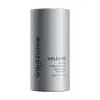What's inside
What's inside
 Key Ingredients
Key Ingredients

 Benefits
Benefits

 Concerns
Concerns

 Ingredients Side-by-side
Ingredients Side-by-side

Water
Skin ConditioningGlycerin
HumectantVolcanic Soil
Skin ConditioningButylene Glycol
HumectantCI 77891
Cosmetic ColorantSodium Palmitate
CleansingKaolin
AbrasiveMica
Cosmetic ColorantCharcoal Powder
AbrasiveCI 77499
Cosmetic ColorantCapryloyl Salicylic Acid
ExfoliatingLactobionic Acid
BufferingMandelic Acid
AntimicrobialBeta-Glucan
Skin ConditioningJojoba Wax PEG-120 Esters
PEG-40 Hydrogenated Castor Oil
EmulsifyingAroma
Methyl Lactate
PerfumingVerbascum Thapsus Extract
Skin ConditioningSaccharide Isomerate
HumectantRhamnose
HumectantPropylene Glycol
HumectantGlyceryl Acrylate/Acrylic Acid Copolymer
HumectantPvm/Ma Copolymer
Emulsion StabilisingPhenoxyethanol
PreservativeCaprylyl Glycol
EmollientEthylhexylglycerin
Skin ConditioningWater, Glycerin, Volcanic Soil, Butylene Glycol, CI 77891, Sodium Palmitate, Kaolin, Mica, Charcoal Powder, CI 77499, Capryloyl Salicylic Acid, Lactobionic Acid, Mandelic Acid, Beta-Glucan, Jojoba Wax PEG-120 Esters, PEG-40 Hydrogenated Castor Oil, Aroma, Methyl Lactate, Verbascum Thapsus Extract, Saccharide Isomerate, Rhamnose, Propylene Glycol, Glyceryl Acrylate/Acrylic Acid Copolymer, Pvm/Ma Copolymer, Phenoxyethanol, Caprylyl Glycol, Ethylhexylglycerin
Water
Skin ConditioningBentonite
AbsorbentKaolin
AbrasiveGlycerin
HumectantPerlite
AbsorbentVolcanic Soil
Skin ConditioningManicouagan Clay
AbsorbentGlycolic Acid
BufferingCollagen
MoisturisingBifida Ferment Filtrate
Skin ConditioningSaccharomyces/Barley Seed Ferment Filtrate
HumectantSaccharomyces/Mother Of Pearl Ferment Lysate Filtrate
Skin ConditioningLactobacillus Ferment Lysate
Skin ConditioningLactobacillus/Soymilk Ferment Filtrate
Skin ConditioningButylene Glycol
HumectantCaprylic/Capric Triglyceride
MaskingZea Mays Starch
AbsorbentCeteareth-25
CleansingCI 77499
Cosmetic Colorant1,2-Hexanediol
Skin ConditioningHydroxyacetophenone
AntioxidantAvena Sativa Kernel Flour
AbrasiveXanthan Gum
EmulsifyingDipropylene Glycol
HumectantHydrogenated Lecithin
EmulsifyingTocopheryl Acetate
AntioxidantTitanium Dioxide
Cosmetic ColorantBisabolol
MaskingMenthyl Lactate
MaskingParfum
MaskingDisodium Stearoyl Glutamate
CleansingAluminum Hydroxide
EmollientPhytic Acid
Citrus Reticulata Fruit Extract
Skin ProtectingEthylhexylglycerin
Skin ConditioningAllantoin
Skin ConditioningSodium Hydroxide
BufferingStearyl Alcohol
EmollientCetyl Alcohol
EmollientPaeonia Suffruticosa Extract
Skin ConditioningMichelia Alba Flower Extract
Skin ConditioningScutellaria Baicalensis Extract
AntimicrobialDunaliella Salina Extract
Skin ConditioningLeuconostoc/Radish Root Ferment Filtrate
AntimicrobialPhenoxyethanol
PreservativePopulus Tremuloides Bark Extract
AntiseborrhoeicWater, Bentonite, Kaolin, Glycerin, Perlite, Volcanic Soil, Manicouagan Clay, Glycolic Acid, Collagen, Bifida Ferment Filtrate, Saccharomyces/Barley Seed Ferment Filtrate, Saccharomyces/Mother Of Pearl Ferment Lysate Filtrate, Lactobacillus Ferment Lysate, Lactobacillus/Soymilk Ferment Filtrate, Butylene Glycol, Caprylic/Capric Triglyceride, Zea Mays Starch, Ceteareth-25, CI 77499, 1,2-Hexanediol, Hydroxyacetophenone, Avena Sativa Kernel Flour, Xanthan Gum, Dipropylene Glycol, Hydrogenated Lecithin, Tocopheryl Acetate, Titanium Dioxide, Bisabolol, Menthyl Lactate, Parfum, Disodium Stearoyl Glutamate, Aluminum Hydroxide, Phytic Acid, Citrus Reticulata Fruit Extract, Ethylhexylglycerin, Allantoin, Sodium Hydroxide, Stearyl Alcohol, Cetyl Alcohol, Paeonia Suffruticosa Extract, Michelia Alba Flower Extract, Scutellaria Baicalensis Extract, Dunaliella Salina Extract, Leuconostoc/Radish Root Ferment Filtrate, Phenoxyethanol, Populus Tremuloides Bark Extract
 Reviews
Reviews

Ingredients Explained
These ingredients are found in both products.
Ingredients higher up in an ingredient list are typically present in a larger amount.
Butylene Glycol (or BG) is used within cosmetic products for a few different reasons:
Overall, Butylene Glycol is a safe and well-rounded ingredient that works well with other ingredients.
Though this ingredient works well with most skin types, some people with sensitive skin may experience a reaction such as allergic rashes, closed comedones, or itchiness.
Learn more about Butylene GlycolCi 77499 is also hydrated iron III oxide. It is created from mixing red and black iron oxides. This helps give shades of darkness to a product.
Iron III oxides are classified as inorganic chemicals for coloring.
Ethylhexylglycerin (we can't pronounce this either) is commonly used as a preservative and skin softener. It is derived from glyceryl.
You might see Ethylhexylglycerin often paired with other preservatives such as phenoxyethanol. Ethylhexylglycerin has been found to increase the effectiveness of these other preservatives.
Glycerin is already naturally found in your skin. It helps moisturize and protect your skin.
A study from 2016 found glycerin to be more effective as a humectant than AHAs and hyaluronic acid.
As a humectant, it helps the skin stay hydrated by pulling moisture to your skin. The low molecular weight of glycerin allows it to pull moisture into the deeper layers of your skin.
Hydrated skin improves your skin barrier; Your skin barrier helps protect against irritants and bacteria.
Glycerin has also been found to have antimicrobial and antiviral properties. Due to these properties, glycerin is often used in wound and burn treatments.
In cosmetics, glycerin is usually derived from plants such as soybean or palm. However, it can also be sourced from animals, such as tallow or animal fat.
This ingredient is organic, colorless, odorless, and non-toxic.
Glycerin is the name for this ingredient in American English. British English uses Glycerol/Glycerine.
Learn more about GlycerinKaolin is a clay. It is used for oil control and to help minimize pores. Like other clays, kaolin has the ability to absorb excess sebum or oil. This can help clean out pores and mattify the skin.
Some types of kaolin may have exfoliating properties. When water is added to kaolin, it becomes a paste with small abrasive particles.
Most kaolin is a white color, but may be pink/orange/red depending on where it comes from.
The name 'kaolin' comes from a Chinese village named 'Gaoling'. Kaolin clay comes from rocks rich in kaolinite. Kaolinite, the mineral, has a silicate layered structure. Kaolinite is formed from chemical weathering of aluminum siilicate minerals.
Besides skincare, kaolin is commonly used to make glossy paper, in ceramics, toothpaste, and as medicine to soothe stomach issues.
Learn more about KaolinPhenoxyethanol is a preservative that has germicide, antimicrobial, and aromatic properties. Studies show that phenoxyethanol can prevent microbial growth. By itself, it has a scent that is similar to that of a rose.
It's often used in formulations along with Caprylyl Glycol to preserve the shelf life of products.
Volcanic Soil is an oil.
Water. It's the most common cosmetic ingredient of all. You'll usually see it at the top of ingredient lists, meaning that it makes up the largest part of the product.
So why is it so popular? Water most often acts as a solvent - this means that it helps dissolve other ingredients into the formulation.
You'll also recognize water as that liquid we all need to stay alive. If you see this, drink a glass of water. Stay hydrated!
Learn more about Water